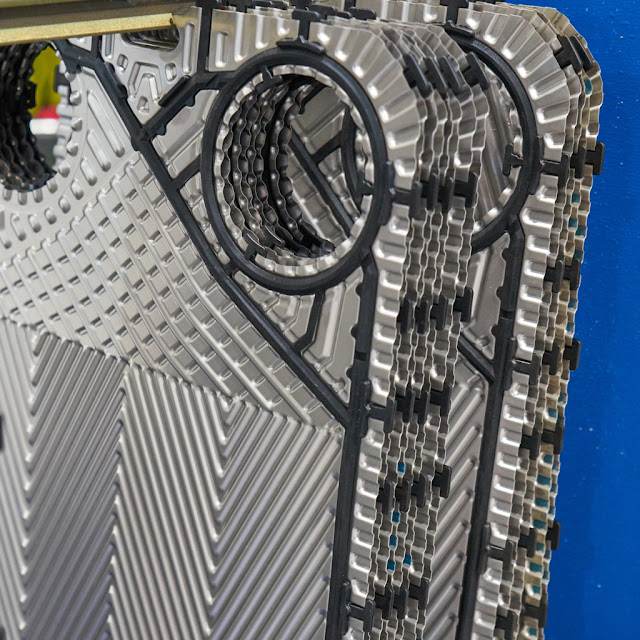Plate Heat Exchangers Frequently Asked Questions (FAQ) Part 2
There are so many Frequently Asked Questions (FAQ) concerning Plate Heat Exchangers I heard in over 25 years of my experience, that we have been forced to provide a second part.
Q) When I have to assemble plates pack after service should I use a torque wrench?
A) No there is no need of a torque wrench, the only criteria is measuring internal distance (A) between frame and cover plate (mentioned on nameplate of PHE) and tightening bolts at proper length. Typical mistake is closing a little bit too much thinking that is a safe way for possible leakage achieving exactly the opposite because gasket groove of plate will be deformed and possible leakage will occur.
 |
| A distance |
Q) In case of leakage shall I remove damaged plate?
A) Not only one plate shoud be removed, but a couple every time, otherwise a mixing between two fluids will occur. If it is just a case of couple of plates , PHE is able to supply required duty without a significant difference.
 |
| Checking always if leakage is due to cool conditions of hot fluid |
Q) For room restrictions, I would like to install PHE in horizontal position, rather than traditional vertical. There are any objections?
A) In principle there are no objections; maybe plates with diagonal flow could work better than parallel flow ones, due to no possible area of air/gas bubbles on the top, but several studies demonstrate there are no differences on thermal performance.
Typical application is PHE on diesel engines mounted horizzontally
Q) We have pressure spikes in our water circuit...how can we detect if leakage is due to water hammer?
A) PHE is responding to water hammer is a typical way: gaskets out of grove.
Other units like Brazed (BPHE) are deforming last plate at the end of plate pack due to rigid structure. PHE owing to set of gaskets is a little bit more flexible, but gaskets are not able to stay in proper position when suddenly pressure is going up.
Q) We have after some weeks of operation a significant reduction of heat load: what should we keep under control first?
A) If flowrates are according to specifications and pumps are running properly, first check is on pressure drops. It's a good practice to install pressure gauges upstream and downstream PHE. During start up many times particles inside piping are moving into PHE that is acting as press filter, keeping are solids into plate pack.
Normally pressures data are going to OCS so that control room is able to detect immediately pressure drop increases. Nowdays IoT device can help to read these info on smartphone as well.
Q) Supplier is mentioning Backflushing to increase service period of plate pack opening: What is this?
A) Backflushing is a system created mainly on large Seawater Cooling in order to change flow of both fluids in opposite direction, so that particles, debris etc. laying on bottom side of plates pack due to reverse flow are moving away.
continue...







Thanks for answers...
RispondiEliminaGireesh Heat Exchanger Manufacturer in Coimbatore & Cooling Towers is established in the year 1998 at Coimbatore, Tamil Nadu.We are one amongst the leading manufacturers and Exporters in Coimbatore .
http://www.gireeshheatexchangers.com/
Thanks for sharing your content, beautifully explained
RispondiEliminahttps://www.nirmal.co.in
You don’t need to be an expert technician to troubleshoot your plate heat exchanger (PHE). PHEs are long-lasting, however, they do occasionally have performance difficulties. Leakage outside the unit, leakage within the unit, and pressure drop are the three most common problems with PHEs. The majority of these problems are simple to identify and resolve with evaporators services.
RispondiEliminaThank you for sharing this blog with us. N K Dairy Equipment provides the best plate heat exchanger in India, offering you the best equipment. If you want equipment for your business dairy, Contact us now.
RispondiElimina